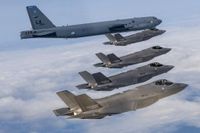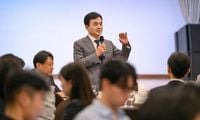On October 1, 2025, South Korea marked its 77th Armed Forces Day with a major announcement: President Lee Jae Myung revealed that the country’s defense budget would surge by 8.2% to a record 66.3 trillion won, or about $47.1 billion. In a televised speech, Lee made his case clear: “Peace will only be possible on a strong foundation of security.” His remarks, reported by Reuters, underscored a new era for the Korean military—one where high-tech innovation and self-reliance are at the forefront, and old assumptions about alliances and threats are being reexamined.
The budget hike is not just a matter of numbers. Lee outlined a sweeping vision to transform the armed forces into what he called “capable and professional smart, elite forces.” According to Bloomberg, the president emphasized that the increased funds would be steered toward cutting-edge technologies, including advanced aero engine development, stealth technology, drones, and robotics. “We will reform our military into capable and professional smart, elite forces by significantly expanding investment in the defense strategic technology sector including advanced aero engine and stealth technology,” Lee declared, making clear that the days of conventional warfare dominance are giving way to a new technological arms race.
Lee’s speech came against a backdrop of shifting global alliances and increasing regional tension. He painted a stark picture of the international landscape: “The momentum for cooperation and shared prosperity is weakening across the world, and we are entering an era of increased conflict, where it’s every man for himself.” The president’s words, as cited by Reuters, signal a determination to ensure that South Korea’s security rests not on the uncertain goodwill of others, but on its own strength and innovation. “To ensure peace and prosperity for the Republic of Korea, we must not depend on anyone else but strengthen our own power,” he added, invoking the country’s official name.
While Lee is known for his willingness to pursue engagement with North Korea, he was unequivocal that “peace would only be possible on a strong foundation of security.” This dual-track approach—seeking dialogue while building deterrence—reflects the complexities of inter-Korean relations and the unpredictable posture of Pyongyang.
Indeed, the numbers are striking. South Korea’s defense spending is already 1.4 times North Korea’s entire gross domestic product, according to Reuters. Yet, the feeling in Seoul is that more must be done, especially as North Korea forges closer military ties with Russia. Defense Minister Ahn Gyu-back, who took office in July as the country’s first civilian defense minister in over six decades, sounded the alarm about Pyongyang’s deepening partnership with Moscow. As reported by the Korea Herald, Ahn disclosed that North Korea had dispatched an estimated 16,000 troops to Russia since last year, primarily military engineers, in support of the war in Ukraine. In return, North Korea appears to be receiving technology transfers “in a considerable scope,” though not Moscow’s most sensitive “core technologies.”
Such developments, Ahn argued, make South Korea’s own military buildup all the more urgent. “Our task is to prepare for the future while sustaining deterrence today,” he said. The government has already resumed live-fire drills near the tense Northern Limit Line—exercises that had been banned under the 2018 inter-Korean military accord, which has since collapsed. Ahn was clear: “Basically, soldiers have to train. If both sides agree to suspend such training and North Korea ceases to do so, that could be a different case, but we cannot unilaterally stop.”
Amid these security challenges, speculation has been rife in some quarters about the future of the U.S. military presence in South Korea, especially as Washington sharpens its focus on China and pressures allies to shoulder more of the financial burden. But Defense Minister Ahn dismissed any suggestion that the roughly 28,500 U.S. Forces Korea troops could be reduced or withdrawn. “The words ‘reduction’ or ‘withdrawal’ are not even on the table,” he told reporters, as quoted by the Korea Herald. “No U.S. military leaders or members of Congress have ever mentioned troop cuts or withdrawal.”
Ahn pointed to the scale of American military facilities in the country as evidence of Washington’s long-term commitment: “The U.S. operates massive bases in Pyeongtaek and Osan, covering more than 24 million square meters. Even in the U.S., sites of such vast size do not exist. This demonstrates that the alliance is strengthening, not weakening,” he said. The latest cost-sharing agreement on stationing U.S. forces, concluded last year, “cannot be rolled back,” Ahn insisted, pushing back against any notion that Seoul’s contributions are up for renegotiation.
Still, both Lee and Ahn made clear that South Korea’s defense spending increases are about more than appeasing Washington. “This is not about what the U.S. wants,” Ahn said. “To prepare for the transfer of wartime operational control and strengthen our ability to counter North Korea’s nuclear and missile threats, we inevitably have to increase defense spending by as much as 8 percent annually.” The government’s aim is to take over wartime operational command from the U.S. during Lee’s five-year term, a long-delayed process that would mark a significant step in South Korea’s military sovereignty.
On the inter-Korean front, Ahn addressed the fate of the 2018 Comprehensive Military Agreement, which established buffer zones and halted hostile acts along the border. He described the pact as “suspended, not scrapped,” and stressed that it cannot be nullified unilaterally. “Both sides would need to agree,” he said. With North Korea having “declared itself a separate state and shut the door to dialogue,” restoring the pact is difficult, but Ahn advocated for starting with lower-level exchanges—cultural or civilian—so that military confidence-building might follow. “North Korea is both an adversary and compatriot. We need to keep channels open, even if progress is slow,” he said.
Meanwhile, South Korea is reinforcing its missile defense and anti-submarine capabilities in light of North Korea’s advances and new threats. “Our forces are closely monitoring the situation with allied reconnaissance assets,” Ahn said, pledging to maintain a robust deterrent posture. The government’s focus on artificial intelligence, uncrewed systems, and next-generation military technology is not just about keeping pace—it’s about staying ahead.
President Lee, who took office in June 2025 after a snap election that followed the fall of Yoon Suk Yeol, has been candid about the challenges facing the military’s image at home. He called for the armed forces to regain public trust after what he described as an “endless decline” in its reputation, a reference to the controversial martial law order imposed by his predecessor. “An army meant to protect the people must never repeat pointing its guns at them,” Lee said, a pointed reminder of the military’s duty to serve the nation, not undermine it.
In the end, the message from Seoul was clear: South Korea is determined to chart its own course in an era of uncertainty, investing in the future while never losing sight of the lessons of the past. As regional tensions simmer and alliances evolve, the country is betting that a blend of innovation, readiness, and self-reliance will keep both peace and prosperity within reach.

